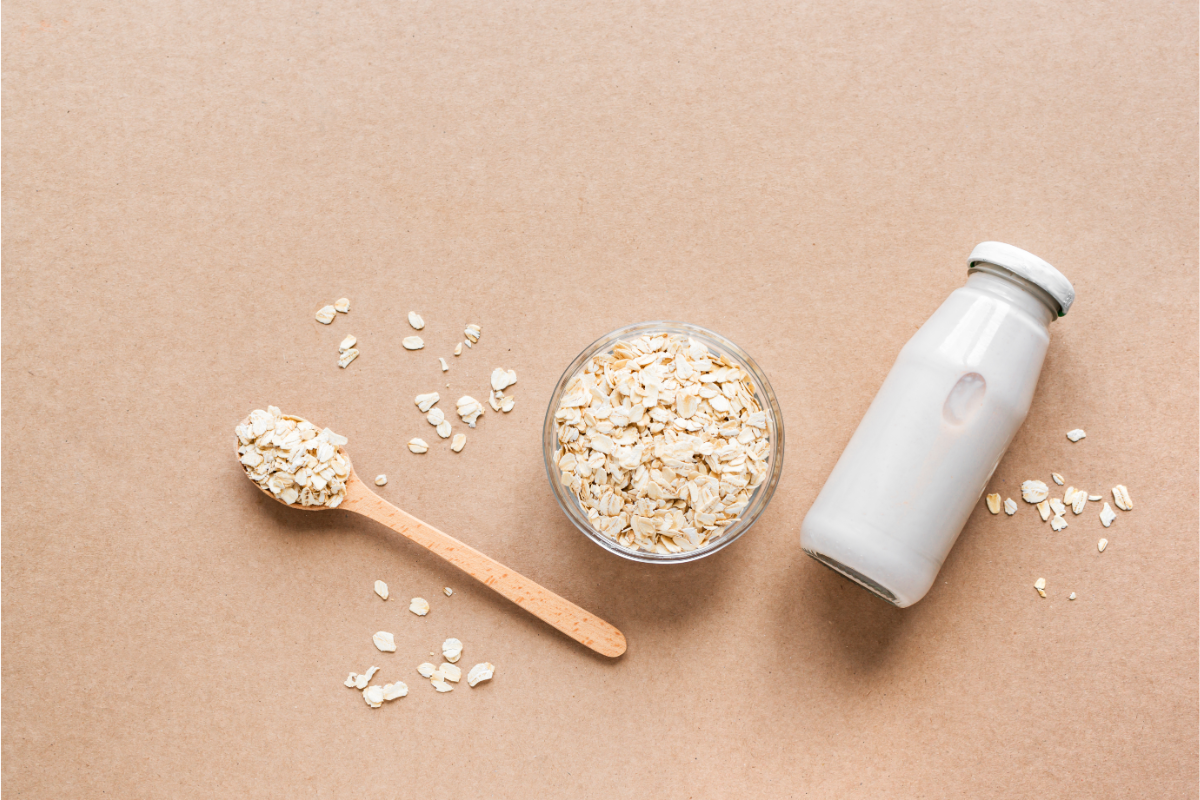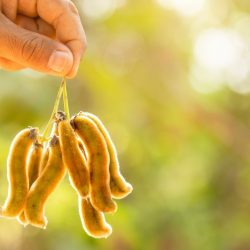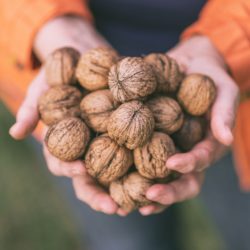Oats are to the north of Europe what barley is to the south, although they are not widely grown in the far north (Russia, Scandinavia). The first known uses of oats date back more than 4,500 years. It continued to be used during the Copper Age and then the Bronze Age, in the temperate regions of Europe and Asia.
What are oats?
Cultivated oats (Avena sativa L.), sometimes known as “common oats”, belong to the Poaceae family, subfamily Pooideae. This species, known only in cultivated form, was probably domesticated in central and northern Europe around 2,500 years ago. It is an annual herbaceous plant with erect stems and inflorescences in loose panicles.
Oats are grown mainly for their starchy fruit and as a fodder crop, valued for its tender, sweet shoots. It plays an important role in animal feed, particularly for equines. The Avena genus includes various cultivated and weed species, including wild oats (Avena fatua).
In terms of requirements, oats need better quality soil than rye. Its stalks remain supple for longer, which is advantageous for fodder. It has a relatively short growing cycle when used as green fodder.
The plant is characterised by long, tapering leaves with a white ligule without auricles. Wild oats flower from May to July. Its hermaphrodite flowers are self-pollinated by the wind. The stem is cylindrical and erect, varying in height from 25 to 150 cm. Inflorescences are loose panicles with spikelets of two to three flowers.
The oat kernel is a hairy caryopsis surrounded by loose glumes. The plant also develops adventitious roots and has a robust fasciculated root system. In France, over 100 varieties of oat are still listed in the Official Catalogue of Species and Varieties. There are almost 360 varieties in the European Catalogue. Varieties are divided into spring and winter varieties. Oats are not suited to poor, flooded or very heavy soils. It does not grow well under shade or in too dense a combination.
A little history
Since the Bronze Age in Europe, oats (Avena sativa) have been used as food for humans and animals, especially horses, and as a medicinal plant. In the Middle Ages, it formed the basis of the diet thanks to its high nutritional value and fortifying properties. In those days, it was sometimes used to stuff mattresses to prevent rheumatism. In the 17th century, Nicolas Culpeper recommended oatmeal, mixed with bay leaf oil, as a poultice to relieve scabies or leprosy, as well as to treat nervous disorders and rheumatism.
In Asia and in Ayurvedic medicine, extract from the aerial parts of oats is recommended in cases of opium addiction. Today, oats are valued for their fortifying and remineralising properties. Herbalists have been using oats since at least the 17th century for a variety of ailments, including fatigue, nervous disorders, depression, insomnia and scabies. As an emollient, it has been used for over a century in body care preparations.
Historically, oat straw was used to stuff mattresses to prevent rheumatism. Oats are a stimulant, used for horses before races. Porridge, a porridge made from rolled oats, is a favourite breakfast food in the UK. Initially used to feed livestock, oats have now been introduced into human nutrition and herbal medicine. The grains, harvested when ripe, are processed into groats, bran and flour for use in food and herbal medicine.
Oats are recommended for relieving nervousness, improving sleep, preventing excess blood cholesterol and cardiovascular disease, and as an emollient to relieve skin irritations.
Traditionally, it has also been used to treat fatigue, appetite problems, urinary stones, rheumatism and gout. Its importance in Germanic and Indo-European cultures is notable, symbolising a staple food and playing a role in agrarian mythology.
What are the main pharmacological properties of oats?
Oat bran and groats are rich in soluble dietary fibre and beta-glucans. These substances reduce the absorption of dietary cholesterol and regulate LDL (“bad”) cholesterol levels in the blood. Oats also contain avenacosides, flavonoids and a variety of nutrients, such as manganese, phosphorus, iron, zinc and vitamins B1 and B5. Its biochemical composition includes minerals such as silica, and compounds such as isoflavones, triterpene saponosides, the indole alkaloid gramine and polysaccharides. Beta-glucans, in particular, are glucose polymers with beta-1,3 or beta-1,4 linkages, giving oats solubility and viscosity properties. These characteristics favour the sequestration of cholesterol and bile salts.
Oats are traditionally used as a winter food. In Chinese medicine, the seed stops sweating and the whole plant stops metrorrhagia. In the West, oats are traditionally used as a mineral potentiator, due to their high silica content, and as a fortifying and anti-asthenic tonic (with the unhulled fruit). It is used to calm nervousness and treat insomnia (action attributed to gramine). As an emollient plant, its decoction is used to prevent constipation and treat eczema, chilblains and scabs.
Nutritional and metabolic properties
Oats are a highly nutritious plant, known for their high protein content, equivalent to that of meat, milk and eggs, according to WHO research. This makes it an ideal fortifying food at the start of the day. Its viscosity prolongs the feeling of satiety by slowing the release of food from the stomach and delaying appetite signals in the intestine. In addition, oats stimulate insulin secretion thanks to their saponins, thus acting on blood glucose levels.
In cardiovascular terms, oats have a cholesterol-lowering and lipid-lowering effect. A randomised clinical trial in 2010 demonstrated its ability to reduce total and LDL cholesterol, particularly as part of a low-calorie diet. It acts by inhibiting the activity of HMG-CoA reductase, an enzyme involved in cholesterol synthesis. The β-glucans present in oats sequester cholic and chenodeoxycholic acid in the faeces, promoting their elimination and thus reducing cholesterol levels.
On the digestive front, oat bran is commonly used to treat constipation, thanks to its soluble and insoluble fibres, which promote digestive health. It also has a prebiotic effect in vitro, helping to modulate the intestinal microbiota. Regular consumption of oat bran or beta-glucans helps maintain normal LDL cholesterol levels. Finally, high-quality clinical studies indicate that oat bran and oatmeal help to regulate blood sugar levels after a meal, which is beneficial for people with diabetes or at risk of diabetes.
Oats reduce total and LDL cholesterol, as shown in a randomised clinical trial in 2010. This reduction is accompanied by a reduction in waist circumference when the plant is used as part of a low-calorie diet.
Neuropsychological properties
The neuromuscular stimulating properties of oats are attributed to trigonelline. The avenin contained in oats has toning effects, strengthening muscular functions during training and physical exercise. This is why horses often consume oats before horse races to increase their stimulation and vigour.
The moderate sedative and sleep-regulating action of oats is linked to gramine, whose molecular structure is similar to that of serotonin and dopamine. The presence of tryptophan promotes serotonin synthesis. This explains the proposed use of the oat mother tincture in smoking cessation and potentially in opiate withdrawal. In addition, oat fibre helps prevent constipation. However, its use for nervousness, insomnia and skin irritations is based mainly on empirical traditions.
A small, controlled study suggests that eating foods containing oats may make it easier to stop smoking. Further research is needed to confirm these results.
Favourable effects on cognition have been observed with doses of 800 mg of flavonoids and triterpenic saponosides. Oat cereals also contain significant quantities of melatonin and GABA, and young Avena sativa shoots contain monoamine oxidase.
Other properties
Are there any precautions to be taken when using oats?
People with an allergic background, characterised by atopy, may experience skin reactions when using products containing oats, particularly creams and lotions. Similarly, individuals suffering from coeliac disease, a gluten allergy, should avoid consuming oat-based products, even though several clinical studies have shown no worsening of this disease with moderate consumption of the cereal.
Consumption of oat-based products can cause bloating and flatulence. In addition, oat infusions can have an impact on alertness, making them potentially dangerous for people who drive vehicles or operate machine tools. People who consume oat bran are also advised to maintain adequate hydration by drinking between 1.5 and 2 litres of fluid a day to avoid constipation.
Oat bran can reduce the absorption of many drugs, particularly those prescribed to reduce cholesterol. Two cases of this type of drug interaction have been observed with lovastatin, a substance not marketed in France. As a result, it is recommended that medicines and oat bran be taken at least two hours apart.
The European Medicines Agency advises against taking phytotherapy products containing oats during pregnancy and while breast-feeding. However, the consumption of oat-based foods and the topical application of oat-based products, such as creams, lotions, baths and compresses, do not appear to pose a problem during these periods.
For children under the age of twelve, the European Medicines Agency advises against the use of oat infusions. However, oat-based products can still be used externally. For emollient baths intended for children, the quantity of oats used should be halved.
Oats are not recommended in cases of hyperthyroidism, particularly Graves’ disease. We also recommend avoiding excessive consumption of oat bran or oat flakes.
What the health authorities think
In 2008, the European Medicines Agency (EMA) formally recognised the traditional use of oat leaves and stalks to relieve nervousness and mild sleep disorders, but limited the duration of treatment to a maximum of two weeks. In addition, the EMA has validated the use of oat kernels applied externally to treat minor skin inflammations, such as sunburn and minor wounds.
In 1998, Commission E of the German Ministry of Health also recognised the traditional use of oat leaves and stems. These parts of the plant can be used in baths to soothe skin inflammation, seborrhoea (oily skin) and itching.
In 2012, the EFSA (European Food Safety Authority) carried out an assessment indicating that oat-based products help to maintain normal blood cholesterol levels. However, two conditions must be met for this contribution to be made. The dietary supplement or food must contain at least 1 gram of beta-glucans per portion. In addition, people must ingest 3 grams of beta-glucans per day. What’s more, these products have been shown to be effective in reducing the rise in blood glucose levels after a meal. However, the food must contain at least 4 grams of beta-glucans for every 30 grams of carbohydrate in the food. This oat-based food should be eaten with a meal.
In the United States, in 2003 the Food and Drug Administration (FDA ) authorised foods rich in oat bran to carry the claim “A diet low in saturated fatty acids and cholesterol, and which contains soluble oat fibre, may reduce the risk of cardiovascular disease”. This recognition highlights the cardiovascular benefits of oat-based products.
How should oats be taken and at what dosage?
To promote sleep, oats can be consumed in various forms. Options include oatmeal, as well as oat leaves and stalks. A commonly used method is to prepare them in the form of an infusion. To do this, take 3 grams of the chosen oats. They are then infused in a cup of boiling water before bedtime.
Oats can also be beneficial for skin problems. To prepare a remedy, we recommend making a decoction. To do this, take 100 grams of oat groats, leaves or stalks and boil them in a litre of water for twenty minutes. The decoction is then filtered and mixed with the bath water. Alternatively, 60 grams of oatmeal can be added directly to the bath.
Regular consumption of oats is recommended to prevent constipation and control excess LDL cholesterol. The appropriate amount is estimated at 40 grams of oat bran or 75 grams of oatmeal per day. Research into cardiovascular disease has shown beneficial effects from a daily intake of beta-glucans equivalent to 3 grams. This corresponds to the quantity of oat bran or oatmeal previously recommended.
- Oats for food use, in the form of flakes or flour.
- Standardised fresh plant fluid extract: 5 to 10 ml per day in a glass of water.
- Hydroalcoholic extract: 25 to 50 drops 1 to 3 times a day.
- Apply compresses soaked in non-alcoholic extract or oat decoction.
- Oatmeal baths: pour 1 litre of decoction (100 g/L boil for 20 minutes then filter) or 50-60 g of oatmeal directly into the bath.
Oats as a magistral preparation of standardised extracts in liquid form (EPS)
Phytotherapeutic formulations known as Standardised Fresh Plant Extracts (SFPE) follow the Phytostandard extraction process. Pharmacologist Daniel Jean developed this process in the 1990s. Marketing of these extracts began in the early 2000s.
EPS is classified as a plant medicine because of its pharmacological action. It is used as a raw material for magistral preparations in pharmacies, thereby acquiring a Marketing Authorisation (MA).
- In association with horsetail and alfalfa: In cases of osteopenia,osteoporosis during the peri-menopause and established menopause, particularly in the context of fruteal or incipient hypothyroidism.
- In association with ginseng and rhodiola: For physical and mental overwork, weight loss and weak thyroid function.
- In combination with tribulus and nettle root: For sexual asthenia, hair loss, loss of vitality and sarcopenia.
- In association with Ginkgo biloba: To combat the intellectual overwork of the post-fifties, increased cardiovascular and metabolic risk in a context of fatigue, weight gain and/or weak thyroid function.
Medical bibliographical sources and clinical trials
- Brown L. et al, Cholesterol-lowering effects of dietary fibre: a meta-analysis, Am J Clin Nutr, 1999
- Maki K.C. et al, Whole-grain ready-to-eat oat cereal, as part of a dietary program for weight loss, reduces low-density lipoprotein cholesterol in adults with overweight and obesity more than a dietary program including low-fiber control foods, J Am Diet Assoc, 2010
- Queenan K.M. et al, Oat beta-glucan, a fermentable fibre, lowers serum cholesterol in hypercholesterolemic adults in a randomized controlled trial, Nutr J., 2007
- Lasztity R., The Chemistry of Cereal Proteins, Akademiai Kiado, 1999
- Wolever T.M.S. et al, Physicochemical properties of oat b-glucan influence its ability to reduce serum LDL cholesterol in humans: a randomized clinical trial, Am J Clin Nutr, 2010
- Thompson S.V., Effects of isolated soluble fiber supplementation on body weight, glycemia, and insulinemia in adults with overweight and obesity: a systematic review and meta-analysis of randomized controlled trials, Am J Clin Nutr., 2017
- Clemens R. et al, The future of oats in the food and health continuum, British Journal of Nutrition, 2014
- Lyly M. et al, Fibre in beverages can enhance perceived satiety, Eur J Nutr, 2009
- Connoly M.L., In vitro evaluation of the microbiota modulation abilities of different sized whole oat grain flakes, Anaerobe, 2010
- Othman R.A. et al, Cholesterol lowering effects of oat β-glucan, Nutr Rev, 2011
- European Medicines Agency, Community herbal monograph on avena sativa l., herba, 2008





